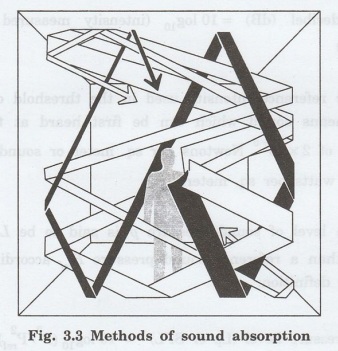Physics For Civil Engineering: Unit III: Acoustics and Lighting Designs
Methods of Sound Absorption
When a sound wave strikes one of the surfaces of a room, some of the sound energy is reflected back into the room and some penetrates the surface.
METHODS OF SOUND ABSORPTION
When
a sound wave strikes one of the surfaces of a room, some of the sound energy is
reflected back into the room and some penetrates the surface.
The
parts of the sound wave energy are absorbed by conversion to heat energy in the
material, while the rest is transmitted through the material
The
level of energy converted to heat energy depends on the sound absorbing
properties of the material.
Room
acoustics describes how sound behaves in a space. That means the listener and
the sound source are in n the s same room.
If
the room has nearly no sound absorbing surfaces (wall, roof and floor), the
sound will bounce between the surfaces and it takes a long time e before the
sound dies out.
The listener in this kind of room will
then have a problem registering the speaker because he hears both the direct
direct sound and
repeated reflected sound waves.
If
the surfaces instead are covered with sound absorbing material, the reflected
sound will decrease much quicker and the listener will only hear the direct
sound. Also, the general sound level in the room will decrease. (Fig. 3.3

Physics For Civil Engineering: Unit III: Acoustics and Lighting Designs : Tag: : - Methods of Sound Absorption
Related Topics
Related Subjects
Physics for Civil Engineering
PH3201 2021 Regulation | 2nd Semester Civil Dept 2021 Regulation
